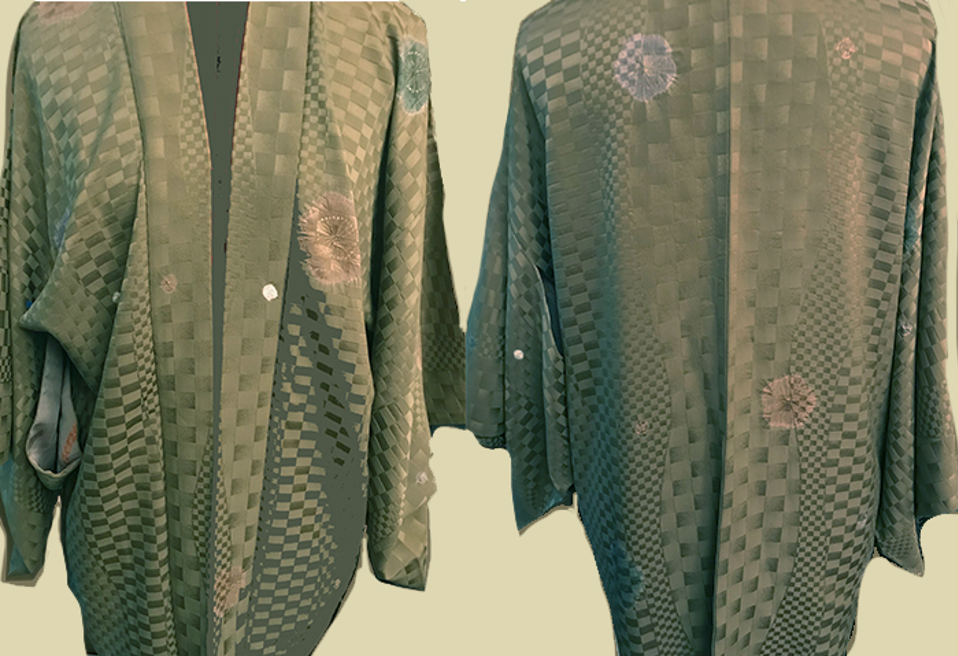We love kimonos, but they can be difficult to wear in modern life. Appreciating the artistry, history, and incredible amount of work that's gone into the making of each one by master textile artisans, it took us some time to decide that it's ok to take them apart and turn them into something else - but we do it with respect, and with the hope that we are giving them new life and keeping them out of mothballs.
Original Haori from the 1980’s used for our Basketweave Shibori Satoko Coat.

We take apart the vintage Kimono or Haori - traditionally, the fabric is hand woven on 14" looms and each garment has roughly 12 yards of fabric, most all of which is sewn into the garment. The garment pieces are straight and have very few curves cut out except at the neckline. The finished garment is designed to be easily altered for any body size.
It takes about 3 hours to take apart the hand stitched Haori. All of the hand stitch work is very even with small stitches. This construction is very rarely found in any ready-to-wear garments today.
Once disassembled, the pieces are washed - first in white vinegar to take out any mothball odor, then with delicate soap, and hung to dry overnight. When all the panels are almost dry they are carefully ironed.
The fabric is then laid out and the pattern pieces placed on top. It is like a puzzle, engineering the pattern to fit just right at the seams. Sometime this means cutting around any stains or marks in the fabric. It can take 6-8 hours to engineer and cut one complete garment.
Below is a layout with the patterns cut and a final check done. Then everything is carefully packaged up together ready to pass to our seamstress.


Our expert seamstress has over 30 years of experience and has worked for couture houses and luxury brands. She will sew the garment from start to finish. Depending on the kimono fabric properties and the trims involved a single style can take 8-9 hours to sew.
The silk fabric in this piece is a jacquard with a basketweave texture. It is a painstaking and work intensive process to create the pattern. Once woven, the fabric was first piece dyed the olive color and rinsed. Then the areas for the Shibori, (tie dye), flower pattern were tied off. These were hand dipped into a discharge, (bleach), solution to remove the olive color. The fabric was then rinsed again and then hand dipped into dye for the flower colors. just at these specific points. Then they were untied and rinsed a third time and dried. Finally, the gold inner flower design was hand painted.

Here is the finished Basket Weave Shibori Satoko Coat. It is styled here with a Xenia Mara belt made from vintage chains. The coat is beautiful worn open or closed...or even as a dress. The silk charmeuse lining makes it feel luxurious and lightweight when you are wearing.

The artistry of this fabric is amazing to us, and we are apparel industry veterans who have worked with incredible silk mills throughout our careers. It is something when we can be this impressed. The quality of the fabric is so well made it can stand up to being worn all day and still look as if you just put it on. It means a lot to us to be able to take these wonderful textiles, and give them a new life for you.

We are invested in our community, and have partnered with the non-profit Refugee Artisans Initiative in Seattle who work with refugee and immigrant women. They teach them sewing skills in their training facility, and give them jobs with contract work afterwards. They make the cotton garment storage bags that each garment is shipped with.
